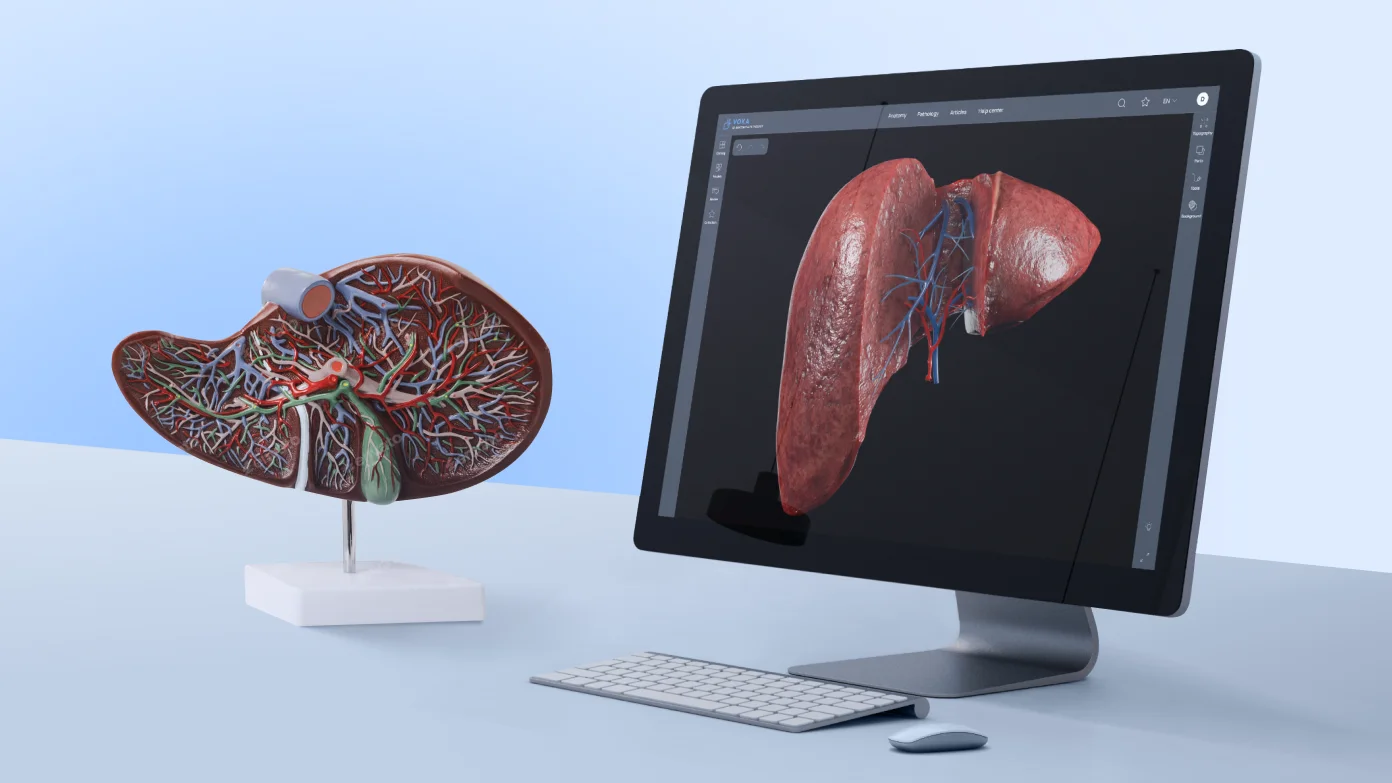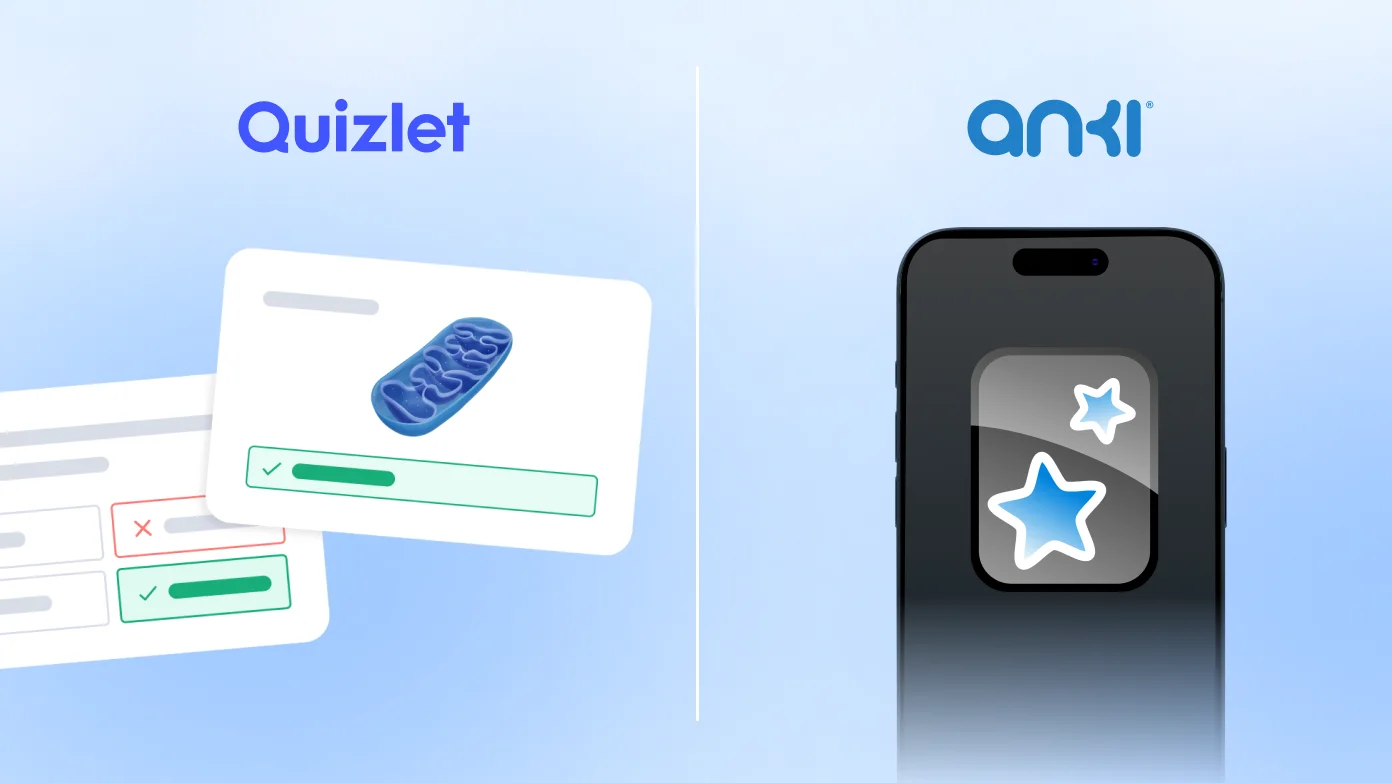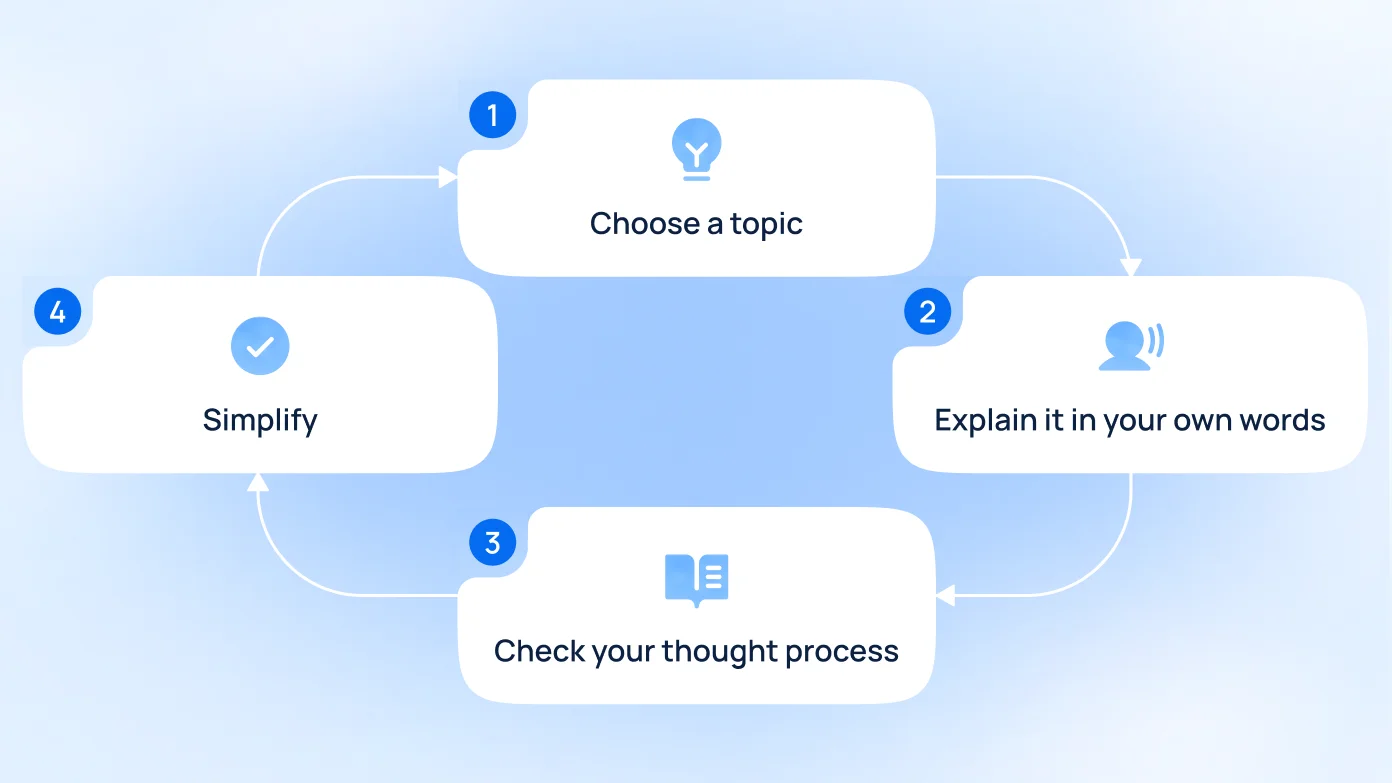
Best ways to memorize anatomy and physiology concepts: a step-by-step success plan

Table of contents
Anatomy and physiology can feel like an overwhelming maze of terms, structures, and complex processes — the sheer volume of information can leave even the most dedicated students feeling lost. To cope with these subjects, you need a proven roadmap that helps you understand, retain, and recall information effectively. In this guide, we’re providing you with a step-by-step plan to remember the body systems and their functions for the long term.
Why is memorizing anatomy and physiology so important?
Imagine building a complex machine without understanding how parts fit or function together. That’s exactly what happens when you study medicine or fitness without a firm grasp of anatomy and physiology. These subjects aren’t just academic hurdles — they form the blueprint of the human body. Mastering them is essential for anyone in healthcare, sports science, or even adjacent fields like medical illustration.
Anatomy: the “what” of the human body
Anatomy provides the structural guidelines of the human body, mapping out the precise location of organs, muscles, nerves, and blood vessels. Consider this: how can a surgeon perform a delicate procedure without a mental map of veins, arteries, and nerves? Or how can a radiologist accurately interpret an MRI or X-ray without understanding the exact positioning of internal structures? Anatomy is the foundation for understanding how different parts of the body interact, which equips medical professionals with the confidence and knowledge required to navigate the body.
Physiology: the “how” and “why” of body functions
If human anatomy is the roadmap, physiology is the operating manual. It explains how the body’s systems function and interact, and why they respond to different stimuli. For example, knowing that the heart is in the chest isn’t enough for a cardiologist. Physiology explains how the heart pumps blood, what regulates its rhythm, and what happens when something goes wrong. Without knowledge of physiology, healthcare professionals (HCPs) would be limited to treating symptoms without understanding the causes.
Foolproof strategy for learning anatomy and physiology
Memorizing endless anatomical terminology and physiological processes won’t get you far without a solid strategy. This section breaks down actionable steps that help you retain information long-term and study smarter, not harder.
Step 1: Build a strong foundation
Who would assemble a puzzle without first seeing the picture on the box? So, before you dive into the details, you need a big-picture understanding of anatomy and physiology. Once you understand the context, memorizing specific features becomes much easier.
To memorize anatomy, start with learning the major body systems: skeletal, muscular, nervous, circulatory, etc. You can use tools like a 3D atlas to explore how different structures are arranged in a body and how they connect.

For physiology, focus on core principles that govern body functions, such as homeostasis, energy production, and system interactions. Understanding why a process happens makes it far easier to remember how it works. Avoid learning isolated facts; try to connect concepts. For example, rather than just knowing that the heart pumps blood, ask yourself why blood needs to circulate and how different organs rely on it. If you’re a visual learner, watching 3D medical animations can also help you explore these processes in action, making them more engaging and memorable.
Step 2: Break down and group information
Once you’ve grasped the big picture, it’s time to focus on the details. Think of it as building a tree: start with the trunk (the system), add the branches (the main parts), and then the leaves (the finer details). This top-down approach keeps your learning structured and helps you see how everything connects.
For anatomy memorization, start with the entire system and gradually break it down into smaller components. For example, after getting familiar with the entire skeleton, focus on specific parts like the spine, and finally learn the names of individual vertebrae.
The same approach works for physiological processes. Begin by understanding the overall function, like how oxygen travels through the body, and then dive into the specific chemical reactions that make it happen.
Step 3: Connect structures to functions
Once you have identified what’s where and how it functions, you can start interconnecting your anatomy and physiology knowledge. The real magic happens when you focus on cause-and-effect relationships. Here are two practical strategies to bridge anatomy and physiology in your studies:
Follow the flow of the function
Think in sequences rather than isolated facts. For instance, trace the blood flow path chamber by chamber instead of just memorizing the chamber names. Similarly, study how electrical impulses travel and lead to muscle contractions, reflexes, or sensory perception rather than just labeling neurons. By studying how processes unfold, you create logical connections that make recall easier.
Use “what if” scenarios
A great way to deepen your understanding is to ask: What happens if this structure stops working? What if an artery gets blocked, and how does it affect blood flow and oxygen supply? Or, if the kidneys fail, what changes occur in blood composition and overall health? These questions push you to think beyond definitions and connect structure to real-world function.
Step 4: Apply active recall
Reading your notes repeatedly might feel productive, but it’s actually one of the least effective ways to learn. To really lock in information, you need to use active recall techniques.
Start by quizzing yourself regularly instead of passively re-reading. Ask yourself questions and see what you truly remember. This forces your brain to work harder, and that’s exactly how strong memories are formed.
Flashcards are also a great tool for active recall, especially when combined with spaced repetition. Apps like Anki or Quizlet can remind you to review material so that it can be stored in long-term memory.

Another answer to the question of how to remember anatomy and physiology concepts is the Feynman technique. It’s a simple method that helps you truly understand what you're learning. Here’s how it works:
Choose a topic, then try to explain it in your own words, as if you’re teaching someone with no background in the subject (it can be a real person or an imaginary audience).
Use simple language or analogies like comparing the heart to a pump or neurons to electrical wires.
If you get stuck, that’s a sign you need to review the material.
Once you’ve filled in the gaps, simplify your explanation again. If you can teach it clearly, you’ve mastered it.

Step 5: Reinforce learning through group practice
Studying solo has its benefits, but sometimes, studying with others can take your learning to the next level. Discussing topics out loud, hearing others’ perspectives, and being asked unexpected questions can take your understanding to a new level.
Join a study group or team up with a classmate for review sessions. Talking through concepts together helps reinforce what you already know and often reveals what you still need to work on. It’s also the perfect chance to put the Feynman technique into practice by teaching others. If you can explain it clearly, you truly get it.
Step 6: Optimize study habits for long-term retention
Smart study techniques are only part of the equation. Consistency, structure, and focus are the secret ingredients to turning short-term cramming into long-term retention.
Create a realistic study schedule that fits your routine. Break large topics into smaller chunks and spread them out over time. This prevents burnout and gives your brain the repetition it needs to store information permanently.
Consistency is key. The more consistent and intentional you are with your study time, the more confident you’ll feel when recalling what you’ve learned.
Mistakes to avoid when studying anatomy and physiology
Even with the best intentions, it’s easy to fall into common traps that slow down your progress or make learning harder than it needs to be. In this section, we’ll break down the most frequent mistakes students make and, more importantly, how to avoid them.

Skipping foundational knowledge
It’s easy to get excited and jump straight into the details, but without a solid grasp of the basics, everything will feel confusing and disjointed. Foundational knowledge, such as body regions and basic functions, acts as your GPS for navigating everything else. If you skip this groundwork, even simple tasks such as reading a diagram or following a lecture can become frustrating.
Tip: Spend time upfront learning the essentials of anatomy and physiology. Understand how systems are organized and get familiar with broad functions before zooming into the details. This knowledge will save you time in the long run, as you won’t need to backtrack constantly.
Rote anatomy memorization without understanding functions
Sure, you can cram every bone and nerve in the body, but if you don’t understand their roles and why they matter, that knowledge won’t stick. Anatomy and physiology aren’t about isolated facts — they’re about how the body works as a system. For example, knowing that the pancreas secretes insulin is helpful, but understanding how insulin regulates blood sugar levels, what triggers its release, and what happens when this process fails is far more valuable.
Tip: Always ask yourself, “What does this structure do?” and “How does this function connect to other systems?” Use cause-and-effect reasoning and real-life analogies to give meaning to what you’re studying. When you understand the “why,” the “what” becomes much easier to remember.
Not using multiple learning styles
If you’re only reading your notes or highlighting your textbook, you’re missing out. Everyone chooses various ways of how to memorize anatomy and physiology concepts, but most students learn best when they combine multiple methods of study, such as visual, auditory, and hands-on techniques. Sticking to just one style can limit how well you absorb and recall information.
Tip: Mix your study methods! Use flashcards, manipulate 3D models, watch animations and videos, talk through concepts out loud, or teach them to someone else. The more senses and brain pathways you involve, the better your learning will stick.
Ignoring review sessions
It’s easy to move on once you’ve “got it,” but without review, you’re likely to forget what you just learned within weeks. Cramming gives you short-term results, but your goal is long-term retention, right?
Tip: Make review a regular part of your routine. Revisit material at increasing intervals — use apps (e.g., Anki) that support spaced repetition. Plus, quiz yourself, redraw diagrams, or teach the concept again. A little review goes a long way in helping you remember more with less stress.
Wrapping up on how to memorize anatomy and physiology
If you’re wondering how to memorize anatomy quickly, here’s the honest answer: there’s no shortcut. It’s a step-by-step process. But anatomy and physiology become much more manageable (and even enjoyable) to learn when you have the right strategy. Since it’s impossible to memorize everything all at once, you should focus on building the understanding first and then reinforcing it over time. Remember, you’re not just studying to pass a test. You’re learning something that will serve you for years to come.
Table of contents
Thank you for your comment!
Your comment has been submitted for moderation and will be published soon. We'll email you once it’s live.